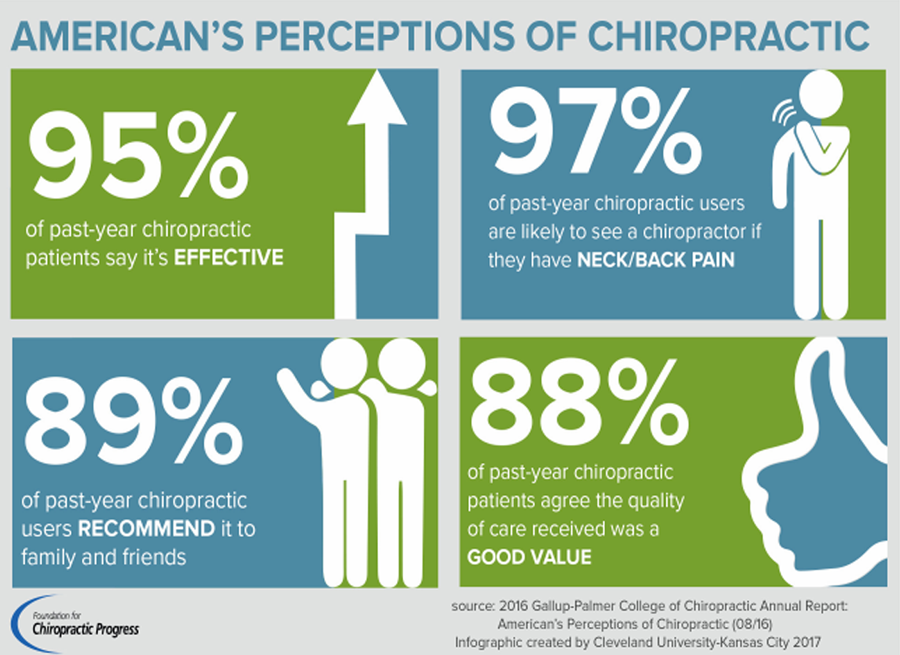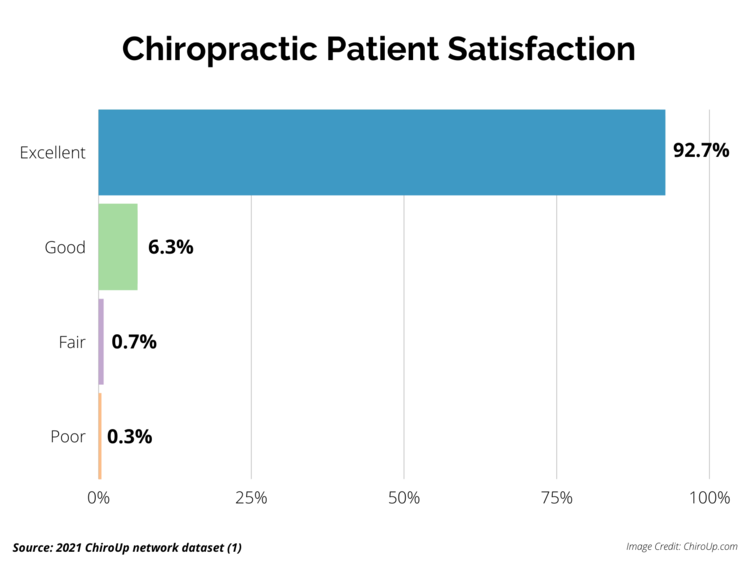Treatment of Patients with Low Back Pain: A Comparison of Physical Therapy and Chiropractic Manipulation
SOURCE: Healthcare (Basel). 2020 (Feb 24); 8 (1): E44
Nima Khodakarami
Department of Health Policy and Management,
Texas A&M University,
College Station, TX 77843, USA.

FROM:
Americans’ Perceptions of Chiropractic 2015
Low back pain (LBP) is a pandemic and costly musculoskeletal condition in the United States (U.S.). Patients with LBP may endure surgery, injections, and expensive visits to emergency departments. Some suggest that using physical therapy (PT) or chiropractic in the earlier stage of LBP reduces the utilization of expensive health services and lowers the treatment costs. Given that there are costs and benefits with each of these treatments, the remaining question is in a short period of time which of these treatments is optimal. The purpose of this study was to investigate the cost-effectiveness of chiropractic versus PT in the U.S. A decision tree analytic model was used for estimating the economic outcomes. The findings showed that the total average cost in the chiropractic group was $48.56 lower than the PT group. The findings also showed that the daily adjusted life years (DALY) in the chiropractic group was 0.0043 higher than the PT group. Chiropractic care was shown to be a cost-effective alternative compared with PT for adults with at least three weeks of LBP over six months.
KEYWORDS: Keywords: chiropractic; physical therapy; treatment outcome; low back pain; therapy; economics; patient satisfaction; recurrence; health care costs; illness
There are more articles like this @ our:
From the FULL TEXT Article:
Introduction
Low back pain (LBP) is a chief cause of years lost to disability in the world. [1] It is also an encumbrance to patients and a burden to societies. In industrialized countries, LBP causes a high cost of medical expenses and loss-of-work. [2–4] Only in the U.S., over $80 billion are directly and indirectly spent in the treatment of LBP, of which $7.4 to $28 billion constitute the cost of loss-ofwork, and $26 billion constitute the cost related to pharmacologic, non-pharmacologic, and therapies. In fact, LBP is the second most common reason for visits to physicians in the US. [5, 6]
While LBP commonly resolves within 8 to 12 weeks, it can persist beyond 3 months in 15% of patients, where it becomes a chronic pain. [5, 7] Thus, it is essential to identify and promote early interventions for acute LBP that are cost-effective. [8, 9] Such interventions are necessary as the burden of chronic back pain may lead to a lower productivity, lower quality of life, and higher financial liability for society. [10]
To manage acute LBP, clinical guidelines recommend physical activity, the use of pharmacologic therapies, and less use of routine imaging. The reason for less emphasis on imaging is that exposure to radiation can raise the risk of carcinogenesis and teratogenesis, which induce unregulated growth processes in cells or tissues. It also imposes dollar charges to the patients However, it can lower the days of suffering from undiagnosed disease (e.g., infections of spine or bone tumor) during the period of treatment. [11, 12] In terms of pharmacologic therapies , the use of acetaminophen or nonsteroidal anti-inflammatory drugs, in conjunction with self-care are suggested. However, if these types of care management do not heal patients, non-pharmacologic therapies including PT and chiropractic therapy are recommended. [13]
PT, for example, is shown to have better outcomes than medical treatment or no treatment at all. [14] A study of the cost-benefits of an early treatment of acute LBP with PT has shown that the outcome for PT is superior to no-treatment or medical intervention alone at one-year follow-up. [9] A similar study found that, at one-year follow-up, physical therapy compared with the usual primary care is a cost-effective treatment for patients with acute and nonspecific LBP. [15]
Also, it is shown that PT reduces the utilization of specific types of care (e.g., diagnostic imaging procedures, magnetic resonance imaging (MRI), use of injection procedures, use of fluoroscopicallyguided procedures, and prescription medication). Accordingly, receiving PT reduces the likelihood of incurring high charges for subsequent healthcare. [16]
Unlike PT, the assessment of patients in chiropractic treatment depends on imaging (e.g., X-rays, computed tomography (CT), and MRI). [17] Nevertheless, chiropractic has shown to have similar benefits to PT. Carey et al. (1995) found that those patients who are treated by chiropractors are more satisfied than those who are treated by orthopedic surgeons. [8] Goertz et al. (2013) also found statistically and clinically significant benefits to those who receive additional chiropractic manipulative therapy compared with those who only receive standard medical care. [18] Hurwitz et al. (2002) showed that the effectiveness of chiropractic care is similar to medical care for LBP after 6 months of follow-up. It is also shown that PT is marginally more effective than medical care alone for reducing disability in some patients. [19]
Thus, both chiropractic therapy and PT, compared with other non-pharmacologic interventions, are shown to have better, yet similar benefits, and at lower costs. [7, 20] Overall, it is shown that PT and chiropractic manipulation have similar effects and costs for patients with LBP. [17] While the assessment of acute LBP focusing on the cost-effectiveness of PT and chiropractic within a short period of time in the U.S is rare, [8, 21, 22] the remaining question is which one of these two treatments is optimal. This paper aims to examine the posed question while it attempts to fill the gap by studying the cost-effectiveness of chiropractic compared with PT within 6 months of treatment and follow-up.
Read the rest of this Full Text article now!





Leave A Comment